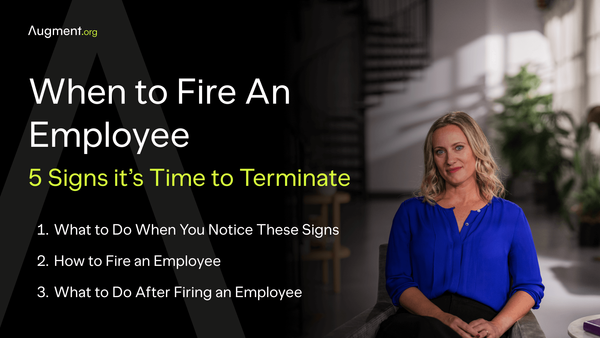Onboarding Best Practices: How to Onboard New Employees
Onboarding is where you lay the groundwork for new hires. It integrates them into the team and company culture. Learn best practices for employee onboarding that will get your new employees up and running.

What is Employee Onboarding?
New employee onboarding is the process of integrating a new hire into an organization. During onboarding, a new employee should be introduced to the company’s culture, learn the expectations for their job duties, complete new-hire paperwork, and, ideally, establish a connection with co-workers, direct managers, senior leaders, and other team members.
By effectively onboarding a new hire you will maximize their productivity. Think of onboarding as an opportunity for your organization to solidify its values and business strategy with its newest additions.
Why is Employee Onboarding Important?
Onboarding sets the stage for a new hire's experience and productivity within a company. By establishing groundwork for job satisfaction, company culture alignment, and retention, you can prevent costly turnover. When onboarding is complete, new employees should be fully informed about company policies, job responsibilities, and the company values.
Effective employee onboarding leads to quicker integration into the existing team and enables new hires to contribute from the outset in a meaningful way.
Gabriela Hersham On the Onboarding Process
9 Employee Onboarding Best Practices
A meaningful onboarding process gives new employees the support they need as they transition into their new roles. Here are some employee onboarding best practices that will set new hires up for success:
- Preparation is Key: Before their first day, prepare all necessary new hire paperwork. Set up their workstations and make sure they can access onboarding software. Consider arranging for company swag or a welcome kit to be ready for them when they arrive.
- Structured Onboarding Checklist: Develop an onboarding checklist for your HR department to follow. Include scheduled meetings with co-workers, direct managers, and senior leaders.
- Clear Communication: Make sure your communication, from offer letter through onboarding, is clear and helpful. Consider letting them in on the first week's schedule ahead of time, and remember to share the company’s policies and the overall strategy of your business.
- Engagement with Company Culture: As early as possible, introduce your new hire to the company culture. Make them feel like part of the team by sharing your organization’s history and values.
- Role Clarity: By sharing expectations, you maximize your new hire’s productivity. They need to understand their job duties from day one.
- Feedback and Adaptation: Create a feedback loop with new hires. Use surveys or informal check-ins to gather insights on their onboarding experience. Refine your onboarding process as needed.
- Training and Development: Implement comprehensive training modules that cater to different learning styles. Include on-the-job training with direct supervisors to provide hands-on experience.
- Mentorship Programs: A mentor can make all the difference in a new hire’s early experiences at your company. Pair them with a more experienced team member to facilitate quicker integration into the organization.
- Regular Check-Ins: It’s up to you to ensure new hires are settling in well. Set up regular meetings with HR and the new employee's direct manager to address any concerns that may arise in the early days.

Onboarding Mistakes to Avoid
Set the right tone for new hires by avoiding common onboarding mistakes. Here are a few to steer clear of:
- Neglecting Proper Planning: Failing to have a structured onboarding plan will leave new hires feeling lost and overwhelmed. Ensure your onboarding program is organized, thoughtful, and welcoming.
- Overloading Information: Don’t bombard new employees with too much information all at once. By spreading out the learning process, you’re allowing them to better absorb and retain information.
- Underestimating the Welcome Gesture: Show them they’re valued with meaningful welcome gestures. A simple welcome email is good, but company swag or even a team lunch are better.
- Ignoring Company Culture: Never assume new employees will automatically understand your company's culture. Explicitly share company values and norms.



